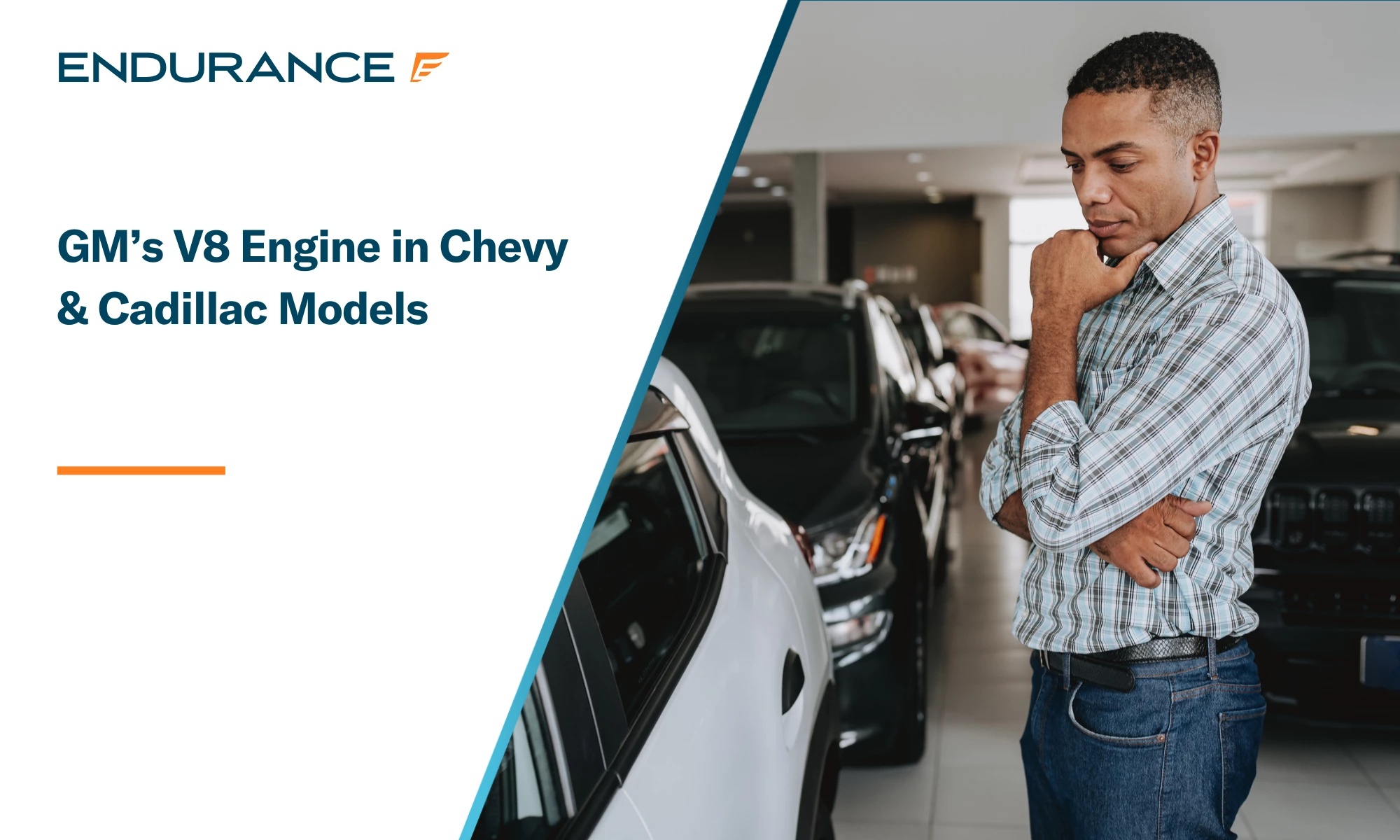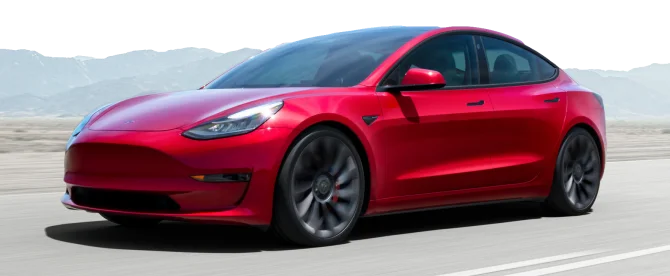Get this deal! Call now.
Speak with a vehicle protection plan specialist and get $300 off any new contract instantly.
Call 866-678-4172
or scan the code below


The recent filing of a class action lawsuit against General Motors means the automaker’s problems with the L87 6.2-liter V8 engine aren’t going away anytime soon. This legal action follows an April 2025 recall involving almost 600,000 newer Cadillac, Chevrolet, and GMC SUVs and trucks, some of GM’s most popular and priciest vehicles. Documentation from the National Highway Traffic Safety Administration (NHTSA) shows that select models are vulnerable to engine failure. The lawsuit cites examples of trouble reports involving the 6.2-liter engine dating back to 2021.
Importantly, not every GM vehicle with this powerplant is affected by the recall. We’ll break down the details and explain why some owners will want to know the implications of this pending lawsuit.
The class action lawsuit at the center of the 6.2-liter V8 issue was filed in the U.S. District Court for the Eastern District of Michigan by Hagens Berman, a Seattle, WA-based law firm. The case, involving plaintiffs from California and Washington State, alleges that General Motors knowingly sold vehicles with serious engine defects.
The NHTSA report reveals that “GM’s investigation identified 28,102 field complaints or incidents in the US potentially related to failure of the L87 engine due to crankshaft, connecting rod, or engine bearing failure.” Of those, more than 14,000 involved a complete loss of propulsion. In other words, the vehicle just stopped working, often with no engine lights or warning signals.
The lawsuit seeks to cover the following vehicles with 6.2-liter engines:
| Make | Model | Model Years |
| Chevrolet | Silverado 1500 | 2019–2024 |
| Chevrolet | Tahoe | 2021–2024 |
| Chevrolet | Suburban | 2021–2024 |
| GMC | Sierra 1500 | 2019–2024 |
| GMC | Yukon | 2021–2024 |
| GMC | Yukon XL | 2021–2024 |
| Cadillac | Escalade | 2021–2024 |
| Cadillac | Escalade ESV | 2021–2024 |
This list expands on the vehicles in the recall by including the 2019-2020 Chevrolet Silverado 1500 and GMC Sierra 1500 (with the 6.2-liter engine). These were the debut years of the L87 powerplant. General Motors only agreed to recall these pickups and SUVs starting with the 2021 model year and for vehicles built between March 1, 2021, and May 31, 2024 (the production window).
The lawsuit goes beyond the recall’s scope by claiming the company’s fix, which includes inspections and a recommendation for using thicker engine oil (explained below), is insufficient. The contention is that these are temporary workarounds that still leave vehicles vulnerable to catastrophic engine failure. The action also suggests that vehicles that have already been inspected may still be at risk of developing engine problems.
Another key element of the lawsuit involves seeking compensation for “economic losses,” which covers reduced vehicle value, higher fuel costs (thicker oil requires the engine to work harder), and reimbursement for out-of-pocket expenses for repairs denied under the recall. In addition, the plaintiffs are asking the court to find that GM was aware of the defects long before issuing a recall and failed to warn buyers or halt sales.
Catastrophic engine failure is a term no car owner wants to hear, but it’s a legitimate concern if you own or are thinking of buying one of the vehicles mentioned above. The trouble with GM’s L87 6.2-liter engines stems from failures of critical components that require proper lubrication and must maintain strict mechanical tolerances (the proper clearance area between moving parts).
In this case, the connecting rod bearings serve as a crucial link between the connecting rods and the crankshaft, enabling smooth rotation during the combustion cycle. Contamination during the manufacturing process can enter the oil system, causing the bearings to wear prematurely. The debris becomes an abrasive compound, causing the bearing surfaces to deteriorate and resulting in improper clearance. Think of this condition like dirt and grit in a bicycle chain, which will cause the metal links to wear down over time, eventually causing the chain to skip or break under normal pedaling.
Similarly, if the crankshaft no longer meets specifications, the bearings don’t receive sufficient lubrication. That can cause the metal parts to rub directly against each other, which wears them out more quickly. Once bearing failure begins, the steps toward complete engine failure can happen rapidly.
As bearings deteriorate, they generate metal particles that contaminate the oil system, accelerating damage to other engine components. The connecting rod may eventually seize or break free from the crankshaft, potentially punching through the engine block in what mechanics call throwing a rod. This type of failure makes an engine completely inoperable. Due to the potential for significant damage, the remedy is often engine replacement rather than repair.
Engine wear is normal to some extent, but warning signs are gradual. For example, piston wear can be signaled by excessive oil consumption. That’s not something that usually happens overnight. In contrast, bearing failure can progress from minor symptoms to complete failure in a matter of minutes or seconds, particularly if the engine is operating under heavy load or high-speed conditions. That’s why numerous owners of L87-equipped vehicles report no prior red flags before engine failure.
In GM Recall N252494000 (NHTSA Recall 25V-274), the automaker outlined the specific corrections to address the manufacturing defects involved with the L87 engine. However, every owner needs to understand what a recall can and cannot accomplish for those impacted by the situation.
To begin, visit the NHTSA recall checker website to confirm if your GM truck or SUV is affected by the recall. GM has a similar online tool. If your vehicle has been tagged, the following will be important. However, you’ll want to read the full details from GM, which will be explained in an official notification if you’re a registered owner in the company’s system.
As announced, the current recall involves a multi-step process that starts with an engine inspection performed by an authorized dealer. Assuming no problems are detected, GM requires switching from the originally specified 0W-20 motor oil to a higher-viscosity (thicker) 0W-40 formulation. A new oil fill cap, oil filter replacement, and updated owner’s manual information are also part of the correction.
Those vehicles that fail inspection or have already experienced related engine problems are eligible for repairs or engine replacements. The recall documentation states that replacement units will use new engines built after the production window. So, the original defects shouldn’t be present in the replacement unit.
Yet, affected owners should be aware that recalls only address the direct problem and the subsequent remedy. There’s no compensation for the time involved, any decline in vehicle value, or the inconvenience of dealing with the recall. The lawsuit raises concerns that switching to higher-viscosity oil could reduce fuel efficiency by an estimated 3-4%, potentially leading to increased fuel costs over time.
Lastly, owner notification about the L87 6.2-Liter V8 recall began in June 2025, potentially years after some vehicles encountered problems. For owners who paid for engine repairs before the recall was announced, the reimbursement processes can be complex and may not cover all associated costs.
For owners of flagship models like the Cadillac Escalade and Chevy Silverado, this issue isn’t a minor inconvenience. Instead, the problem directly threatens vehicle reliability and resale value. Adding to the frustration is that it’s too early to tell how trade-in values might be affected. No one can say whether the recall remedy will stabilize depreciation or draw greater attention to the problem, causing values to sink further. With almost 600,000 units involved, this recall is massive on any scale. The plaintiff’s law firm calls the recall “one of the largest engine replacement endeavors in GM’s history.” Inspecting this many vehicles alone, not to mention replacing engines, will be a years-long effort.
According to discussions on automotive forums, engine replacement costs for affected models like the Escalade can reach $18,000. Meanwhile, RepairPal estimates that certain major engine repairs, such as camshaft replacement in a Silverado 1500, may cost up to $5,000.
Replacing an engine or a major engine component can be eye-watering. However, factory warranties don’t last forever, and recalls aren’t usually comprehensive. A problem with the engine or transmission can leave you on the hook for a four- or five-figure repair bill. This is when having an extended car warranty (more accurately called a vehicle service contract) can be invaluable.
Endurance offers powertrain protection, starting with the most basic plan and going up to the most comprehensive. Drivers looking for the most coverage should choose the Endurance Supreme plan, which offers protection most similar to the manufacturer’s warranty that accompanies a new car. There are also in-between options that balance cost and coverage.
Importantly, every Endurance plan includes 24/7 roadside assistance (with towing and other services), rental car reimbursement, trip interruption protection, and the freedom to choose any licensed repair facility (including dealership service departments).
Breakdowns become even more unpleasant when you’re paying for the surprise repair bills. Learn how Endurance Warranty can protect your Buick, Cadillac, Chevrolet, or GMC (and many other vehicles) by requesting a FREE quote. Instant plan and pricing information is available through the Endurance online store. Have coverage questions or looking for more personalized options? Call an Endurance plan advisor at (800) 253-8203.
Be sure to explore the Endurance blog. There, you’ll discover expert-written articles about automotive trends, repair advice, maintenance tips, and more.

We've received your vehicle information and will contact you shortly with your quote.
— OR —
Start shopping for a coverage plan now.

We're here to make sure you get the most comprehensive EV protection. That's why we've partnered with Xcelerate Auto to offer you transparent and dependable Tesla coverage.
Want us to contact you about XCare coverage for your Tesla?



Your protection is our top priority. Your quote is in progress and you will
receive a confirmation
email shortly.


Speak with a vehicle protection plan specialist and get $300 off any new contract instantly.

Call for $300 off any new plan!
By clicking the button, you consent to Endurance using automated technology to call, email, and text you using the contact info above, including your wireless number, if provided, regarding auto protection or, in California, mechanical breakdown insurance. You also agree to the Endurance Privacy Policy and Terms and Conditions. Consent is not a condition of purchase, and you can withdraw consent at any time. Message and data rates may apply.


Speak with a vehicle protection plan specialist and get $300 off any new contract instantly.
Call 866-678-4172
or scan the code below



Simply fill out the information below and we will follow up fast with your free no-obligation quote.
By clicking the button, you consent to Endurance using automated technology to call, email, and text you using the contact info above, including your wireless number, if provided, regarding auto protection or, in California, mechanical breakdown insurance. You also agree to the Endurance Privacy Policy and Terms and Conditions. Consent is not a condition of purchase, and you can withdraw consent at any time. Message and data rates may apply.

To speak to a vehicle protection plan specialist and get $300 off any new contract instantly
Scan the code below
Dave is an automotive journalist combining a deep passion for cars, hands-on mechanical experience, and dealership insight. His writing primarily focuses on consumer auto advice and enthusiast pieces. A regular contributor to SlashGear.com and other leading automotive platforms, Dave earned his BA in Journalism from The George Washington University.